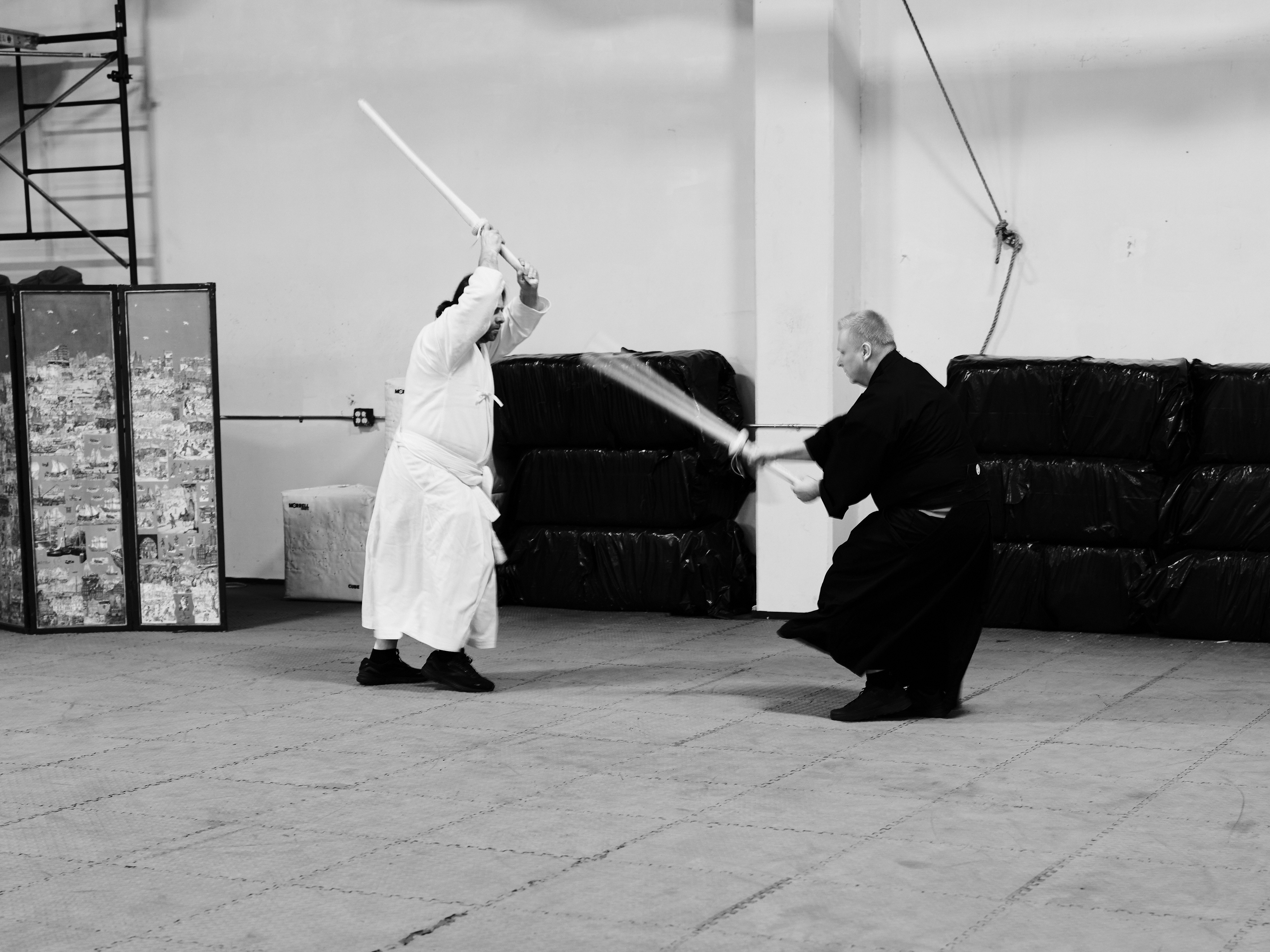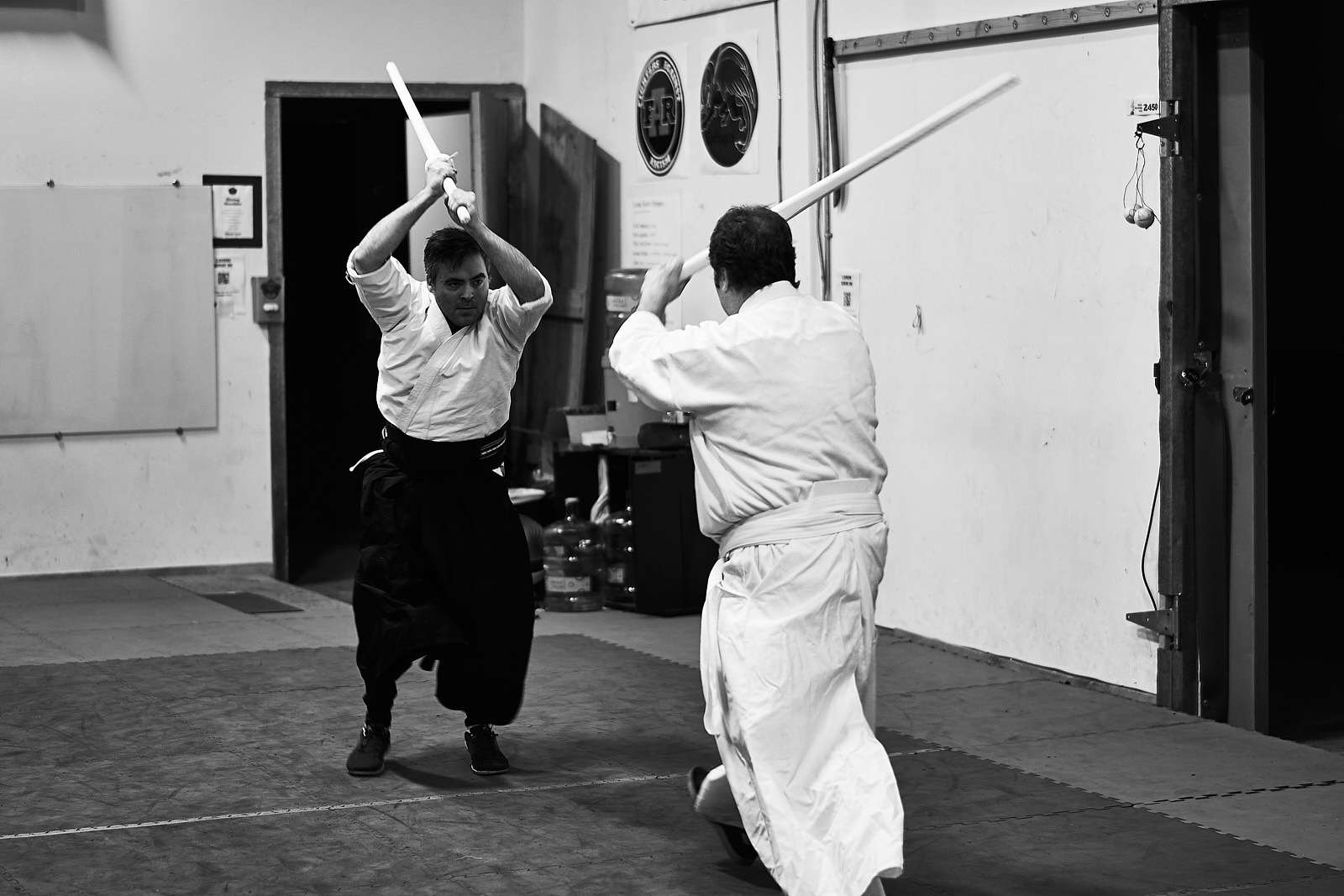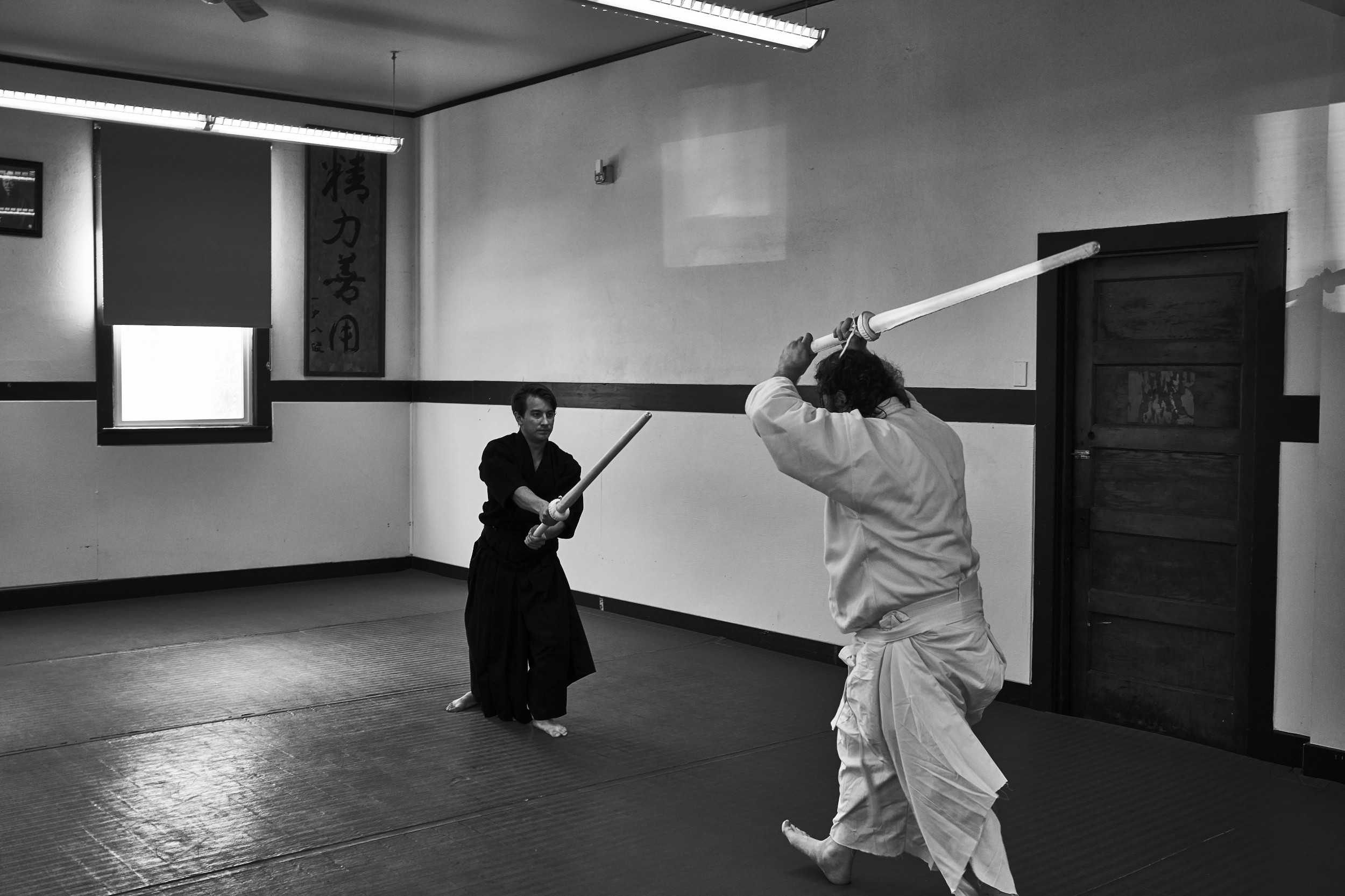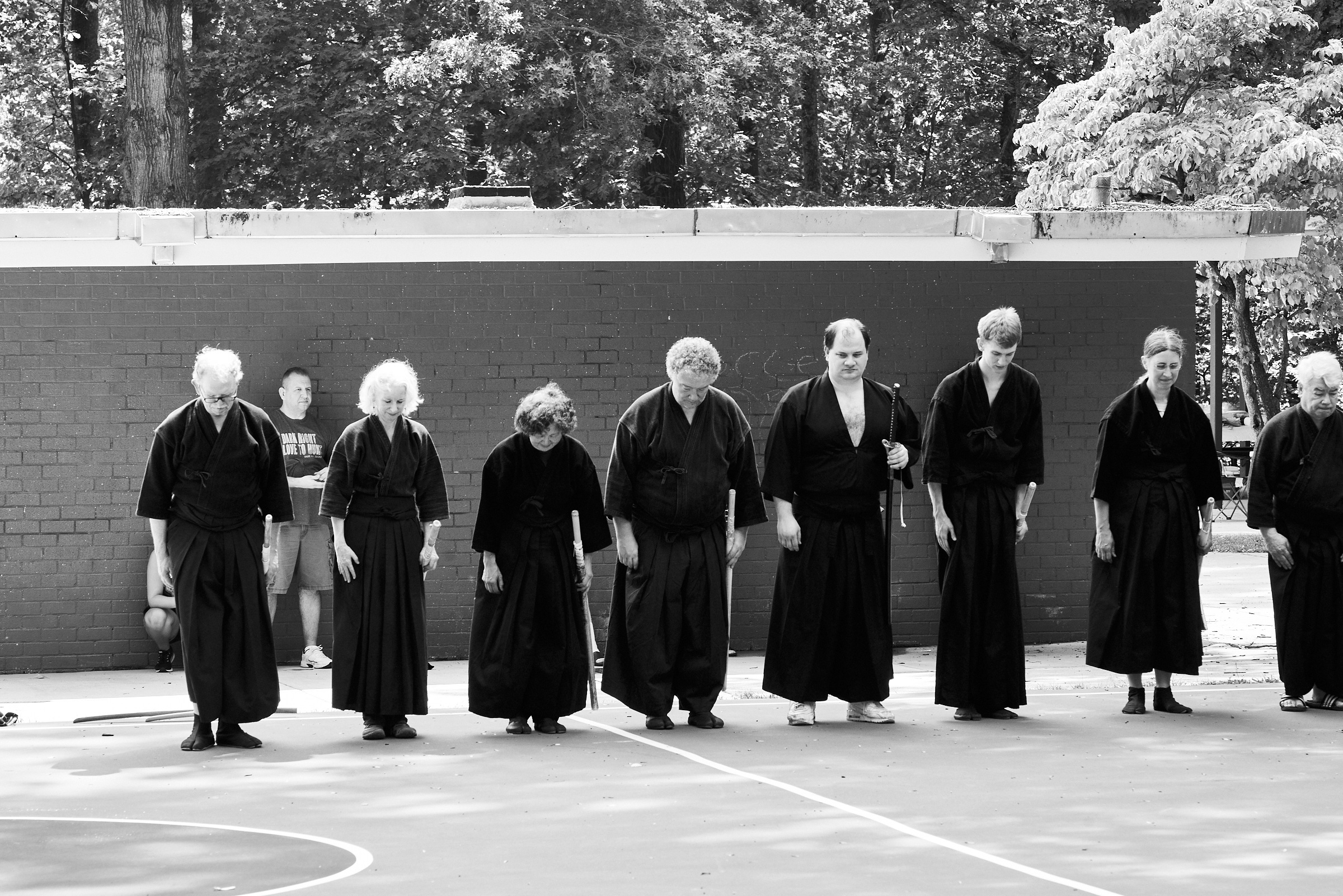兵法
I studied several approaches to classical Japanese swordsmanship before moving to Seattle in 2016. Chief among them was an unofficial line of Kashima-shinden Jikishinkage-ryū maintained at the Hōbyōkan following the teachings of Namiki Yasushi and Itō Masayuki.
Since that time I have continued traditional katageiko, conducted analyses of kata in a process called kuzushi and performed combative pressure testing called tameshi-ai. In doing this, my practice has become increasingly influenced by my continued study of internal martial arts. Time spent making pilgrimage to sacred sites in Japan has refined my thinking, to the point where I feel strongly my approach is something unique.
I now use the name Shin-no-shinkage heihō
気剣体の一致を会得したとき、剣術の極意は全う するのである — When one has mastered the harmony of spirit, sword and body, the secret of swordsmanship is realized.
Two works survive by Ogasawara Genshinsai and can be found in the Odawara City Library collection [
Regarding the rise of his tradition, Genshinsai wrote:
I am calm and composed. Although I have tried various streams, I have not yet reached the deepest level of the art. Because I have crossed the river differently, people are in harmony with each other, and they are diligent in their studies. I am thinking about it with a sincere heart.
One explanation from Karukome and Sakai (cited above) is as follows:
The content of this record roughly says that he has studied various schools since he was young, but was unable to reach their profound meaning. However, by traveling overseas and learning from others, he reached the profound meaning, and after carefully thinking about these, he named it Shin-no-shinkage heihō.
The martial arts exchanges between China and Japan in the Ming Dynasty were certainly far more than the Kage-ryu crossing of the sea related to General Qi and the single-sword method related to Liu Yunfeng from Zhejiang. The example here can be called the second Kage-ryu crossing of the sea in terms of the inheritance of Kage-ryu.
The first crossing of Kage-ryu described above, influenced the development of the Chinese martial arts I study. It is only fitting that when I practice Japanese martial arts, I practice content derived from the second, in terms of how I approach my continued practice.
The Quanzhen School (
is one of the two dominant denominations of Daoism in China. One of its founders was master Wang Chongyang (1113–1170). When the Mongols invaded China the Quanzhen Taoists exerted great effort in keeping the peace, thus saving most Han Chinese lives. Qiu Chuji, a major disciple of Wang, founded the Dragon Gate lineage (龍門派 Lóngmén pài), along with the White Cloud Monastery in Beijing. This tradition remains one of the largest Taoist sects in China.
I think it is no accident Ogasawara returned from China using the character
I want to draw a clear distinction between my own continued practice
and the efforts of others who hold formal lineages of these and related arts. Shin-no-shinkage heihō importantly does not
include the character for ryū (流) in its name – this is a personal practice and not a new line
of transmission. I practice kenpō (
In Jikishinkage-ryū, the use of term Kashima-shinden dates from 1765, over one hundred and fifty years after the founding of the art. Its use is due to the influence of Naganuma Shirōzaemon attributing the genesis of the art to Matsumoto Bizen no Kami, a retainer of Kashima shrine. His predecessors, Takahashi Danjozaemon and Yamada Heizaemon (Ippusai), regarded Kamiya Denshinsai as the originator of the art, and in writings by Heizaemon in 1708, no mention of Kashima-shinden is made.
So, in my mind, the concept of Kashima-shinden is not associated to historical Jikishinkage-ryū at the time of early masters like Okuyama and Ogasawara. It is also much more likely Matsumoto Bizen no Kami studied under Kamiizumi Ise no Kami, founder of Shinkage-ryu (all of whose variants credit him as their originator), than the other way around. The emphasis on Kashima-shinden was an Edo period innovation for that art and hides some of its earlier character – that change of emphasis has only increased in modern times with influences from state Shinto and militaristic Zen popular in the Meiji and Taisho periods.
Earlier writings on the art by Ogasawara instead cite a number of esoteric Buddhist guardian deities instead of Takemikazuchi-no-kami, the patron deity of Kashima,
as providing protection to its adherents,
including: Fudō-o (Acalanatha;
無想法身虚実同体—不動経 (Musō-hō mi kyojitsu dōtai) The oneness of reality and emptiness — the Acalanatha Sutra.
In my own training, I emphasize Taoist aspects of the art, including complementarity (yin and yang) and five element theory and draw inspiration from esoteric Buddhism and Shugendō when I view my practice as a form of Shugendō:
- I have evolved my practice to constrain my expression of kiai to be more akin to the vocalizations found in internal martial arts: flowing from, or aligned with, a movement, rather than driving a movement.
- I no longer forcefully coordinate breathing with each movement, but instead keep my breathing relaxed and steady and utilize sophisticated reverse breathing methods from Tàijíquán instead of the ibuki style of breathing often used during traditional aun kokyu.
- Emphasis is placed on developing a connected body that integrates force with each action in an optimal manner while remaining relaxed and able to adapt suddenly when needed.
In doing this, it may seem I am doing something new, but I believe I am returning to how the art was more likely practiced in the past. All arts change and adapt over time. One example relevant to my practice is the core Shinkage-ryū kata called empi, said to be the essence of Kamiizumi Ise no Kami's Shinkage-ryū. The kata is present in Ogasawara's writing, using the homophone
Most lines of Jikishinkage-ryū no longer practice those essential sets of teachings. Ogasawara's practice and the earlier teachings of Kamiizumi Ise-no-kami are clearly connected in this manner, the latter which credits Aisu Kage-ryu as its inspiration:
また,流儀を興した経緯について,源信斎は,「予 自リ レ若,雖モ レ試ルト 二諸流ヲ一,未ダレ至ラ 二其奥儀ニ一,異朝ニ渡ル故,人ニ相応ズル之旨叶ヒ,忩テ勤メレ之ヲ, 倩々思レ之ヲ以テ真之心陰ト云 26)」(送り仮名,返り点,読点筆者)と述べている。[...] しかし,国郷以前の伝書に「鹿島神伝」と記 されることはなかったようである。 cf. Karukome Yoshitaka, Sakai Toshinobu: An analysis of the formation of Jikishinkage-ryū in relation to its lineage and transmission.
武道学研究 47―3: 119―138, 2015. 原著.
Curriculum
Below is a summary description of the three levels of practice I have organized my teaching around:
Shoden
Formal katageiko includes methods of walking, cutting, breathing and foundational methods called hōjō that consist of paired partner practices introducing five element theory (gogyō). Once proficiency is developed with foundations, an austere set of tactical forms are introduced.
Chuden
At the core of our practice, we explore kuzushi and conduct pressure testing called tameshi-ai. The use of the small sword called kodachi is then introduced and serves as a point of departure for armored grappling methods called kogusoku. Older versions of the foundational practice are then conducted with steel swords called habiki-to. Foundational and tactical practices are explored with a variety of implements, exploring the kuden: "one mind, any weapon".
Okuden
As I have been fortunate to study other lines of Shinkage-ryū as well as Shintō-ryū heihō, I am able to preserve variants of these core teachings in my continued training. I use examples drawn from them as points of departure for futher analysis in my Shin-no-shinkage heihō. The precise nature of these explorations are private to my school.
Galleries
Kagami Biraki: 2025
Kagami Biraki: 2024
Kagami Biraki: 2023
Pandemic Keiko: 2021
Below are photos from some events I attended with the Hōbyōkan before moving to Seattle:
Memorial Enbu for Karuna-sensei: 2016
Where To Train
Tōsha Dōjō is a study group maintaining a practice of the kata of Jikishinkage-ryū led by Jake Harlin and Nicky Sayah Sina at Lonin, a martial arts cooperative in Seattle. Training is by invitation only after observing a practice and undergoing a traditional interview process.




